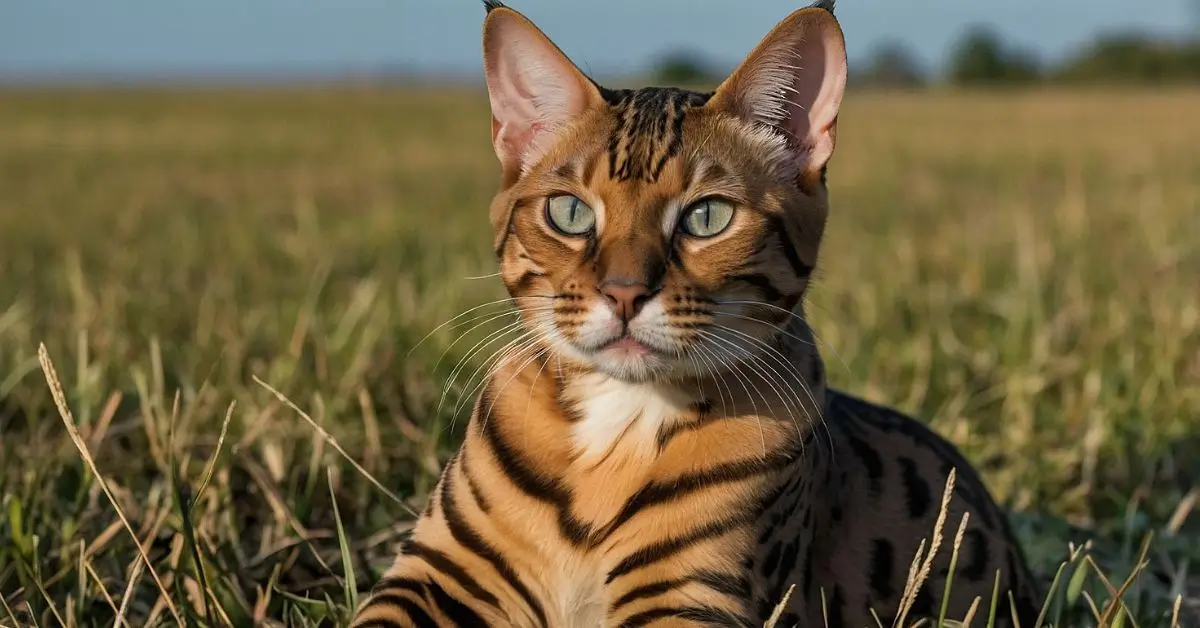Breeding Bengal cats requires careful planning, extensive knowledge of feline genetics, attention to health, and a deep passion for this unique breed. Bengals are beloved for their striking wild appearance, playful personality, and distinct coat patterns, but breeding them involves more than just pairing cats for aesthetic traits. This guide will walk you through the essential steps and considerations to breed healthy, well-tempered Bengal cats responsibly.
Understanding Bengal Cats
Before diving into the specifics of breeding, it’s important to have a solid understanding of what makes Bengal cats unique. Bengals are a hybrid breed, originally developed by crossing domestic cats with Asian Leopard Cats (ALC). The goal was to create a breed with the look of a wild cat but the temperament of a domestic feline.
Key Traits of Bengal Cats:
- Coat and Pattern: Bengals are famous for their luxurious, short coats covered in spots, rosettes, and marbled patterns. These markings give them the appearance of a small leopard or jungle cat. Their coats are often sleek and have a glittery sheen.
- Personality: Bengals are active, intelligent, and playful cats. They require mental stimulation and physical exercise, as they are curious and sometimes mischievous.
- Size: Bengals tend to be medium to large in size, with males typically weighing between 10 to 15 pounds and females slightly smaller.
Preparing to Breed Bengals
Breeding Bengal cats is not just about pairing two cats; it’s about breeding for health, temperament, and conformation to breed standards. Preparation is key.
1. Understanding the Genetics of Bengal Cats
Bengals have specific genetic traits that set them apart from other breeds, such as their coat patterns and wild ancestry. Breeding Bengals involves working with these genetics to enhance desired traits while avoiding health or behavioral issues.
- Rosetted and Spotted Patterns: The coat patterns are determined by the Agouti gene (A) and Spotted gene (Sp). Spotted and rosetted patterns are dominant, meaning they are more likely to appear in offspring.
- Marble Pattern: This is a recessive trait that can appear when two carriers of the gene are bred. Breeding for this pattern requires an understanding of recessive inheritance.
- Glitter Gene: This gene gives the cat’s fur a shiny, iridescent look. Though not essential, many breeders favor this trait as it enhances the Bengal’s exotic look.
Having a basic understanding of these genetics is critical when choosing which cats to breed, as pairing certain cats can either enhance or dilute desirable traits.
2. Choosing Breeding Bengals
When selecting Bengals for breeding, consider not only their appearance but also their health, lineage, and temperament.
- Lineage: Ensure that the Bengals you choose come from strong lines with good genetic backgrounds. Avoid breeding Bengals that are too closely related to prevent genetic health issues caused by inbreeding.
- Health Testing: Breeding Bengals should undergo thorough health screening to ensure they are free from genetic disorders. Common tests include:
- Hypertrophic Cardiomyopathy (HCM): A heart condition that can affect Bengals.
- Progressive Retinal Atrophy (PRA): A genetic condition that leads to blindness.
- Pyruvate Kinase Deficiency (PK-deficiency): A metabolic disorder that causes anemia.
Health is a top priority, so it’s essential to conduct these tests to avoid passing on harmful genes to the offspring.
- Temperament: Bengals are known for being active and curious, but it’s important to ensure the breeding pair has a good temperament. This ensures that the kittens will be well-adjusted and easier to place in loving homes.
3. Setting Up a Breeding Program
If you are serious about breeding Bengals, you will need a breeding program. This involves careful planning, record-keeping, and commitment to improving the breed.
- Breeder Certification: Consider getting certified by recognized Bengal cat breeding associations, such as The International Cat Association (TICA) or Cat Fanciers’ Association (CFA). This will provide credibility and ensure you are adhering to high breeding standards.
- Cattery Environment: Set up a clean, safe, and comfortable space for your breeding cats. Bengals are highly active, so they need plenty of space to roam and exercise.
- Nutrition: Breeding Bengals, particularly pregnant queens (females) and growing kittens, need a high-quality, protein-rich diet. Consult with a vet or a feline nutritionist to ensure your cats are receiving the right nutrients.
4. Legal Considerations
Breeding cats comes with legal and ethical responsibilities. Be sure to follow local breeding laws and obtain any necessary permits. Additionally, be mindful of ethical breeding practices to avoid overbreeding and contributing to the issue of stray cats.
The Breeding Process
Once you have your breeding pair and have done your preparatory work, the actual process of breeding can begin.
1. Heat Cycle in Bengals
Female Bengals (queens) typically go into heat every two to three weeks during the breeding season, which can last from spring to early autumn. Signs that a queen is in heat include:
- Increased Affection: Queens in heat may rub against objects more than usual.
- Loud Vocalization: They may “call” loudly to attract mates.
- Restlessness and Pacing: The queen may seem agitated or overly active.
- Increased Urination: Some females will spray to mark territory.
Breeding should occur when the queen is in full estrus, which is the most fertile phase of her heat cycle. This ensures the best chance of conception.
2. Mating and Conception
When a Bengal queen is ready to mate, she should be introduced to the male (tom). It’s ideal to bring the female to the male’s territory to avoid aggression. The mating process is quick, but several attempts may be necessary to ensure pregnancy. Signs that the queen has conceived can include cessation of the heat cycle and subtle changes in behavior, such as becoming calmer.
3. Pregnancy and Gestation
The gestation period for Bengal cats is around 63 to 70 days. During pregnancy, it’s essential to provide proper care, including:
- Regular Vet Checkups: Ensure the queen’s pregnancy is progressing well with regular vet visits.
- Nutritional Support: Provide high-protein and high-calorie food to support both the mother and her developing kittens.
Pregnancy in Bengals usually progresses smoothly, but complications such as premature labor or difficulty birthing (dystocia) can occur, so be prepared for emergency veterinary assistance if needed.
Caring for Kittens
Once the kittens are born, their care becomes the top priority.
1. Birth and Early Care
Most Bengal queens are capable of delivering their kittens on their own, but some may need assistance. If you’re present during the birth, ensure a calm and safe environment. Once the kittens are born, they should nurse almost immediately.
Post-birth care includes:
- Warmth: Ensure the kittens are kept warm, as newborns are unable to regulate their body temperature.
- Nursing and Nutrition: Newborn kittens rely on their mother’s milk for the first few weeks. If the mother is unable to nurse, you may need to bottle-feed the kittens with a specially formulated kitten milk replacer.
- Weaning: Kittens typically begin the weaning process around 4 weeks of age, transitioning to solid food by 6 to 8 weeks.
2. Socialization
Bengal kittens are known for being playful and energetic. Proper socialization from an early age is essential to ensure they develop into well-adjusted adult cats. Handle the kittens gently but frequently to get them used to human interaction. Introduce them to different environments, toys, and people to build their confidence.
3. Vaccinations and Health Checks
Around 6 to 8 weeks of age, the kittens will need their first vaccinations to protect against common feline diseases. Regular vet checkups will also help ensure that they are growing healthy and free of congenital health issues.
Selling and Placing Bengal Kittens
As a responsible breeder, it’s your duty to find loving, suitable homes for the kittens. Bengals can be in high demand due to their beauty and unique personalities, but it’s important to vet potential buyers to ensure they are equipped to handle the breed’s needs.
1. Screening Potential Buyers
Because Bengal cats are active and curious, they may not be suitable for all households. Ensure that potential buyers understand the needs of Bengals and are committed to providing a stimulating and safe environment for their new pet.
2. Paperwork and Contracts
When selling Bengal kittens, it’s a good practice to have a contract that outlines the responsibilities of both the buyer and the breeder. This can include spaying or neutering requirements, health guarantees, and return policies in case the new owner cannot keep the kitten.
3. Follow-Up
Maintaining a relationship with the buyers allows you to ensure the kittens are thriving in their new homes. Some breeders offer ongoing support to buyers, providing advice on care, feeding, and training.
Challenges in Breeding Bengals
While breeding Bengal cats can be a rewarding experience, it is not without challenges.
- Health Issues: Even with health testing, some Bengals may develop genetic conditions that require attention.
- Behavioral Problems: Bengals are highly active and intelligent, which can lead to behavioral problems if they are not properly stimulated. Breeders need to educate buyers on how to manage their energetic personalities.
- High Maintenance: Bengals require a lot of attention, space, and care, which can be taxing for breeders.
- Ethical Considerations: Responsible breeding practices are crucial to avoid contributing to the overpopulation of cats or the propagation of genetic disorders.
Conclusion
Breeding Bengal cats is a complex but fulfilling endeavor that requires dedication, knowledge, and responsibility. By focusing on the health, temperament, and well-being of both the breeding cats and their offspring, breeders can contribute positively to the Bengal breed while ensuring their kittens find loving, suitable homes. If you’re committed to the journey, the rewards of seeing your well-bred, healthy, and happy Bengal kittens grow into beloved companions will make all the hard work worthwhile.











